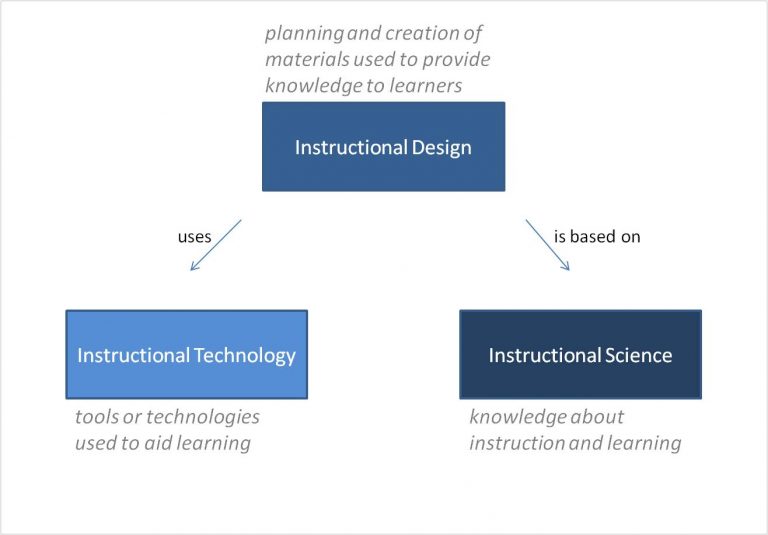-
Partner Services
- Curriculum Design & Development
- Faculty Development
- Instructor Staffing Services
-
Case Studies
- Colleges and Universities
- Columbus Council on World Affairs
- Nationwide
- Ohio Society of CPAs
- Supreme Court of Ohio Judicial College
- Degrees & Certificates
-
About Us
- Our Team
- Blog Archive
Categories
Authors
Archived Articles
The Difference Between Instructional Design, Instructional Technology, and Instructional Science
What is the difference between instructional design, and instructional technology, and instructional science? There are many different subsets of the field of instructional design, and in this post I will clarify the differences between these different terms.

Science is “knowledge, as of facts or principles; knowledge gained by systematic study” (http://dictionary.reference.com/browse/science). Instructional Science, therefore, is knowledge about instruction and learning and is based on systematic research and study of what works in instruction. Much of this knowledge is produced through research, and practicing instructional designers also acquire useful knowledge through experience.
Instructional Technology is a tool or technology used to aid learning. I perceive three main types of instructional technologies or tools:
- Instructional Theory – a set of prescriptions describing what the instruction should be like when it is finished. Instructional theory “offers explicit guidance on how to better help people learn and develop” (Reigeluth, 1999; also, see Wikipedia’s article on Instructional Theory).
- Instructional Design Process – systematic guidance on specific steps or phases to follow to help ensure that the instruction is of high quality. Examples include the ADDIE Model and the Dick & Carey Model (Dick, Carey, & Carey, 2006).
- Physical Technologies and Tools – physical objects used to create and represent the knowledge that is being taught in the instruction. These technologies are be used by the instructional designer to create the instruction.
So then what is Instructional Design? It is the deliberate planning and creation of materials used to provide knowledge to learners.
A degree in instructional design is different than a degree in instructional technology. Clearly there is a lot of overlap, but different programs have different emphases. I earned a master’s degree in instructional technology, and we spent a lot of time focusing on the tools. In contrast, a degree in instructional systems design might place more emphasis on the instructional design process. I currently teach in the Master Program in Instructional Design & Learning Technology at Franklin University. This program focuses more on the design process and on linking design to business results.
About the Author
Joel GardnerDr. Gardner is currently an instructional designer and department chair for the International Institute for Innovative Instruction at Franklin University.
Copyright 2025 Franklin University